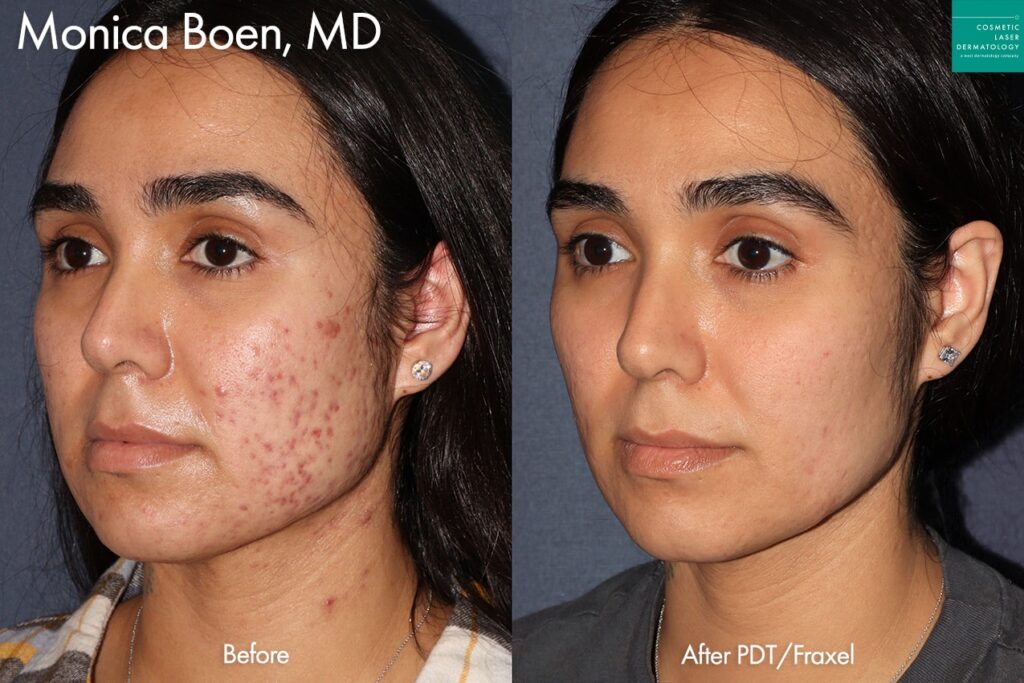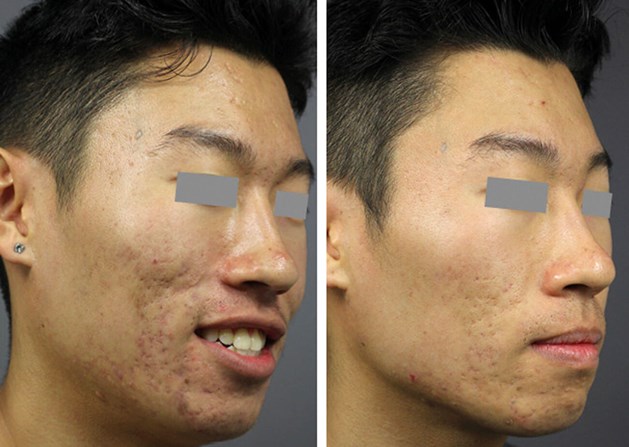Best Acne and Acne Scars Treatment: Recover Your Skin's All-natural Charm
Best Acne and Acne Scars Treatment: Recover Your Skin's All-natural Charm
Blog Article
Recognizing the Different Skin Problem and Effective Treatment Choices for Acne Marks
Acne scars represent a complicated interaction of skin disease that substantially impact individuals' self-confidence and total skin health. Recognizing the distinctive kinds of acne marks-- atrophic and hypertrophic-- along with their underlying causes, is critical for identifying effective therapy approaches. Different restorative choices exist, varying from advanced dermatological treatments to natural solutions. Nonetheless, the efficiency of these therapies frequently hinges on customized evaluations by qualified specialists. As we discover the landscape of acne mark administration, it becomes evident that the trip towards clearer skin might involve even more than just topical solutions.
Types of Acne Scars
Acne marks can show up in various kinds, each needing details treatment approaches. The two key groups of acne scars are hypertrophic and atrophic scars. Atrophic scars are identified by a loss of tissue, resulting in clinically depressed areas on the skin. These scars are more categorized into 3 subtypes: ice pick marks, which are narrow and deep; boxcar marks, which are bigger and have well-defined edges; and rolling scars, which develop a wave-like appearance as a result of unequal skin appearance.
On the other hand, hypertrophic scars result from an overproduction of collagen throughout the healing procedure, resulting in elevated areas on the skin. These marks are frequently firm and can differ in shade, occasionally appearing red or darker than the surrounding skin.

Sources Of Acne Scarring
Marking occurs as a result of the body's natural recovery response to inflammation and injury brought on by acne sores. When acne types, it activates an inflammatory action, causing the release of various cytokines and growth factors that advertise recovery. This process can occasionally lead to too much tissue formation or inadequate repair service, resulting in marks.
The primary reasons for acne scarring include the extent of the acne itself, period of the lesions, and specific skin types. Extreme inflammatory acne, such as cysts and blemishes, is extra most likely to lead to scarring because of deeper tissue damage. Additionally, improper handling of acne lesions, such as squeezing or choosing, can worsen cells injury and inflammation, increasing the chance of scarring.
Hereditary proneness likewise plays a significant duty; people with a family history of scarring go to a greater danger. Skin type and shade can affect scar development, as darker skin tones might experience post-inflammatory hyperpigmentation, while lighter skin may create atrophic scars.

Therapy Alternatives for Scarring
Effective therapy alternatives for acne scarring vary depending upon the type and severity of the marks. Usually classified right into atrophic, hypertrophic, and keloid marks, these problems call for tailored techniques for ideal outcomes.
For atrophic scars, which are characterized by a loss of cells, therapies such as chemical peels, microdermabrasion, and laser treatment are commonly employed. These approaches advertise skin revival and stimulate collagen production, thus boosting skin texture. Subcision, a minimally intrusive procedure, can also work by separating coarse bands beneath the skin.
Keloid and hypertrophic scars can be a lot more challenging to treat. Alternatives include corticosteroid shots to reduce swelling and flatten the scars. acne treatment for sensitive skin. In many cases, cryotherapy or laser treatment may be suggested to decrease their look
Surgical options are offered for extreme scarring, where excision or skin grafting might be essential. It's vital for people to her comment is here speak with a skin specialist to analyze their certain scar kind and review one of the most ideal therapy strategy. Incorporating multiple treatments often produces the very best outcomes, making certain that each patient's unique skin disease is attended to successfully.
Natural Home Remedy and Natural Solutions
All-natural solutions and natural remedy can supply an accessible strategy for people seeking to improve the appearance of acne marks. Different ingredients located in the home kitchen area have actually demonstrated potential benefits in boosting skin texture and promoting recovery.
Applying fresh aloe vera gel straight onto the marks can aid enhance skin hydration and decrease soreness. Honey has all-natural anti-bacterial and moisturizing qualities that can aid in scar healing.
One more effective option is lemon juice, which acts as a natural exfoliant and can lighten hyperpigmentation. Nonetheless, it ought to be utilized very carefully, as it might trigger photosensitivity. Oatmeal masks are additionally advantageous; their mild peeling can assist get rid of dead skin cells while soothing irritation.
Important oils, such as tea tree oil and lavender oil, can further sustain scar healing as a result of their antimicrobial residential or commercial properties. It is vital to perform a patch examination prior to applying any kind of remedy to guarantee he has a good point there are no adverse reactions. These natural remedies can be a corresponding method in the journey to decrease acne scars.
Stopping Future Scarring
Taking on a proactive strategy to skin care can considerably decrease the risk of establishing future acne marks. Among the crucial techniques is to handle acne properly as it arises (acne treatment for sensitive skin). This involves making use of non-comedogenic skincare products and medications recommended by dermatologists that target acne without irritating the skin. Normal cleaning, peeling, and hydration can help keep skin health and wellness and stop stopped up pores.
Additionally, avoiding the temptation to squeeze or choose acne lesions is critical, as this can bring about inflammation and subsequent scarring. Instead, people need to concentrate on using topical therapies that promote healing and minimize swelling. Ingredients such as salicylic acid, benzoyl peroxide, and retinoids are recognized check this for their efficiency in managing acne and reducing marks.

Finally, keeping a healthy and balanced diet abundant in anti-oxidants and staying moisturized assistances skin regrowth. By implementing these preventative measures, individuals can significantly decrease their risk of future scarring and promote overall skin health and wellness.
Conclusion
Finally, a comprehensive understanding of acne marks, incorporating both hypertrophic and atrophic types, is important for effective treatment methods. Tailored interventions, including professional treatments and natural home remedy, can considerably boost skin look and appearance. Precautionary measures also play a critical function in reducing future scarring. Assessment with a skin specialist stays necessary to devise individualized techniques that take into consideration specific skin kinds and mark intensity, eventually enhancing the efficiency of scar monitoring strategies.
Acne scars stand for an intricate interaction of skin problems that substantially influence individuals' self-confidence and overall skin wellness. The two primary categories of acne marks are atrophic and hypertrophic marks. These scars are further identified into 3 subtypes: ice pick scars, which are deep and slim; boxcar scars, which are broader and have well-defined sides; and rolling scars, which develop a wave-like look due to unequal skin structure.
An extensive consultation with a dermatologist can aid determine the most ideal treatment, taking into account the person's skin type, mark severity, and total skin health and wellness.
Examination with a skin specialist remains vital to devise personalized strategies that consider specific skin kinds and scar seriousness, eventually boosting the efficiency of scar monitoring techniques.
Report this page